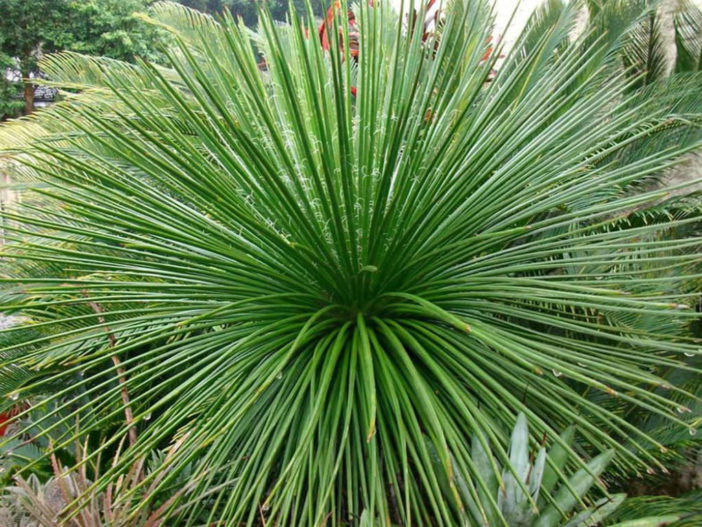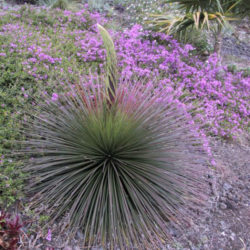Scientific Name
Agave geminiflora (Tagl.) Ker Gawl.
Common Name(s)
Twin Flowered Agave
Synonym(s)
Littaea geminiflora
Scientific Classification
Family: Asparagaceae
Subfamily: Agavoideae
Genus: Agave
Origin
Agave geminiflora is endemic to the Mexican State of Nayarit.
Description
Agave geminiflora is an architectural succulent with narrow, dark green leaves cascading from the center of the plant and forming a dense rosette. The leaves are unarmed, stiff but very flexible, and measure up to 24 inches (60 cm) long and 0.3 inches (0.8 cm) wide. The rosette can reach up to 3 feet (90 cm) in height and nearly equal in diameter.
When the rosette matures, it produces flowers arranged in pairs on an unbranched spike that rises to 10 feet (3 m). The flowers are greenish, flushed with red or purple, and up to 2 inches (5 cm) long.

Hardiness
USDA hardiness zones 9a to 11b: from 20 °F (−6.7 °C) to 50 °F (+10 °C).
How to Grow and Care
Agave is not a difficult plant to grow. They're slow-growing and dramatic and will even thrive on a bit of neglect. If you're the type of person who likes to fuss with houseplants and water a lot, Agave is probably not the plant for you. On the other hand, if you're the type of person who likes to set it and forget it, and you have a sunny window, Agave might be the way to go. Be aware that some large varieties will eventually outgrow your room (unless you have a large greenhouse), and Agave can be aggressive. They have irritating sap and sometimes very sharp thorns that can cause injuries to small children and even pets.
In general, Agaves do not need to be repotted every year. Most species commonly found in cultivation grow slowly and take long to outgrow their pot. It's also best to handle your Agave as little as possible since they dislike being disturbed. When repot, refresh the spent soil with a new potting mix and ensure the plant is firmly anchored in its pot.
See more at How to Grow and Care for Agave.
Links
- Back to genus Agave
- Succupedia: Browse succulents by Scientific Name, Common Name, Genus, Family, USDA Hardiness Zone, Origin, or cacti by Genus
Photo Gallery
Click on a photo to see a larger version.


